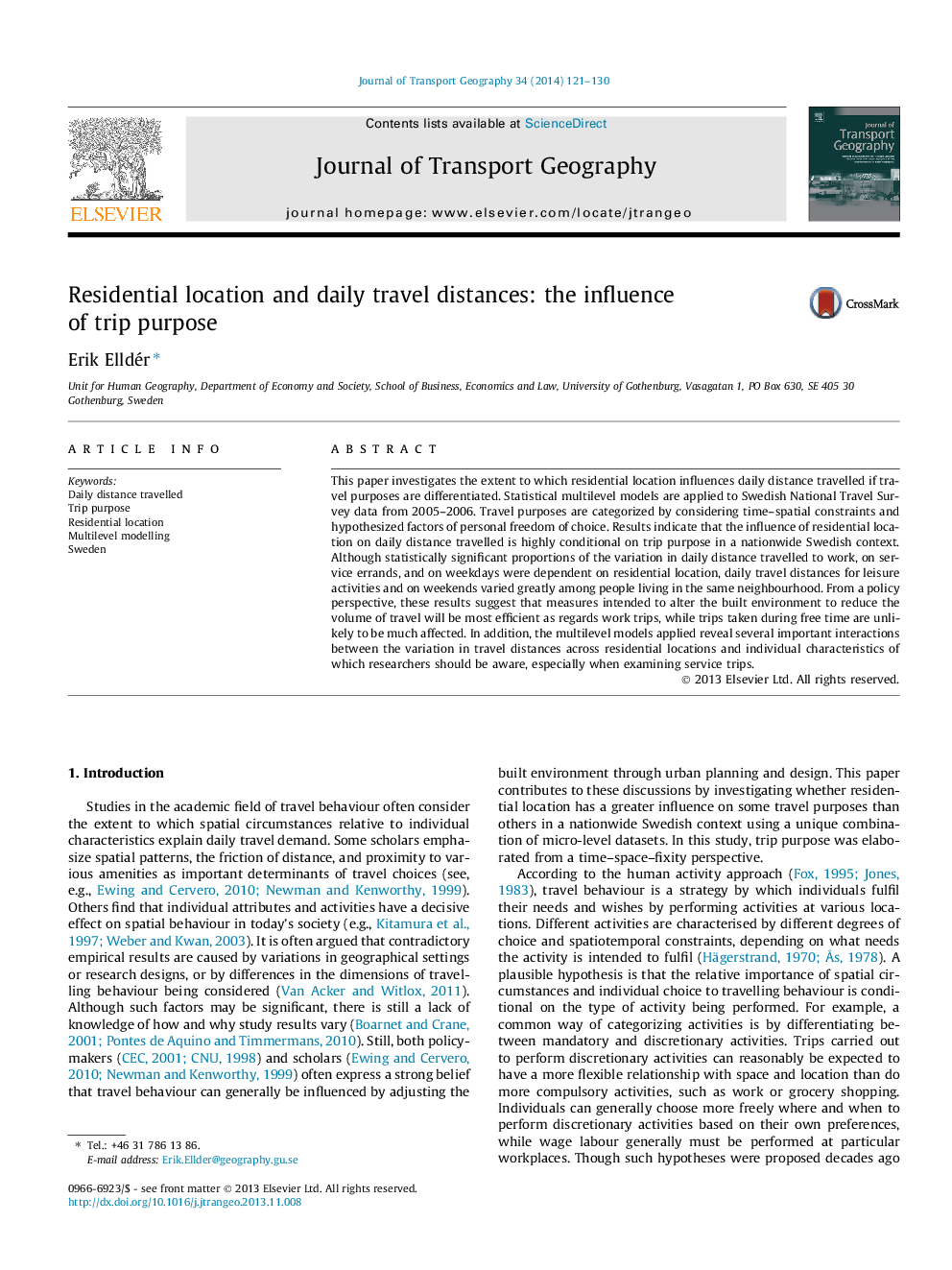| Article ID | Journal | Published Year | Pages | File Type |
|---|---|---|---|---|
| 7486253 | Journal of Transport Geography | 2014 | 10 Pages |
Abstract
This paper investigates the extent to which residential location influences daily distance travelled if travel purposes are differentiated. Statistical multilevel models are applied to Swedish National Travel Survey data from 2005-2006. Travel purposes are categorized by considering time-spatial constraints and hypothesized factors of personal freedom of choice. Results indicate that the influence of residential location on daily distance travelled is highly conditional on trip purpose in a nationwide Swedish context. Although statistically significant proportions of the variation in daily distance travelled to work, on service errands, and on weekdays were dependent on residential location, daily travel distances for leisure activities and on weekends varied greatly among people living in the same neighbourhood. From a policy perspective, these results suggest that measures intended to alter the built environment to reduce the volume of travel will be most efficient as regards work trips, while trips taken during free time are unlikely to be much affected. In addition, the multilevel models applied reveal several important interactions between the variation in travel distances across residential locations and individual characteristics of which researchers should be aware, especially when examining service trips.
Related Topics
Life Sciences
Environmental Science
Environmental Science (General)
Authors
Erik Elldér,
